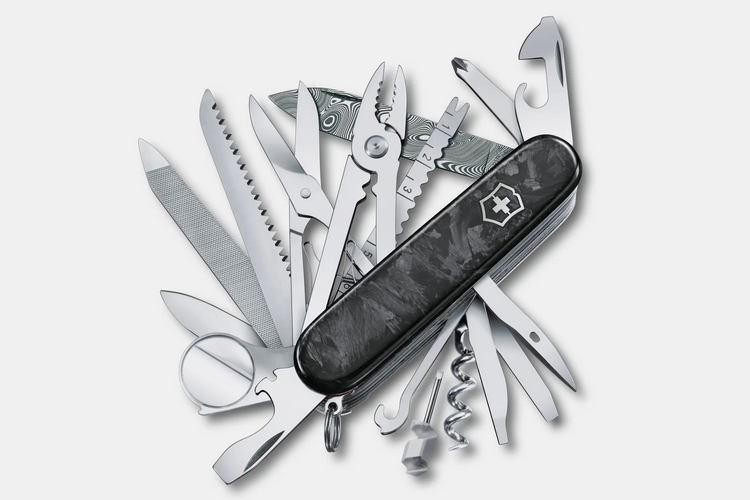Different professional cameras can do different things well. Cameras with excellent low light performance that do portraits well may not quite cut it for wildlife photography. Same with sports photography cameras whose high burst rates and continuous shooting modes don’t quite make them ideal for fine art photography. Not to mention, of course, that many photography-focused cameras offer video capture as an auxiliary function that doesn’t quite make them the best options for serious filmmaking.
That doesn’t mean there are no professional cameras that can handle most photography and videography functions equally well. They do exist and they’re highly regarded for their versatile capabilities. Sure, they may fall a bit short in each specific area compared to specialty models, but the fact that they can perform at such a high level across different types of activities make them particularly special.
The best professional cameras are usually at the higher-end of the price scale. That’s not surprising, given the incredible flexibility they bring to your workflow, allowing you to use the same camera for most types of professional jobs. Sure, one job may require different lenses and accessories from another, but the fact that you can take just one camera body for a variety of tasks make them an incredible convenience.
In our opinion, these are the best all-around professional cameras available today.
Nikon D850
Pros
- Excellent balance of high resolution and speed
- Spectacular image quality
- Very long battery life
Cons
- Not good in extreme low light settings
- Very basic autofocus
- Requires the fastest (aka most expensive) memory cards
Even though it’s on the older side, this all-purpose camera remains one of the best professional DSLRs around. It has a sensor that captures 47.5MP stills with class-leading image quality at its base ISO 64, so you get plenty of resolution for high-res photography tasks, while being reasonably fast enough (up to 9fps continuous shooting speed when using the optional battery pack) to be usable for action photography. And yes, it’s that unusual mix of resolution and speed that makes it such a versatile performer.
For video, it captures footage in 4K UHD at 30 fps and uses the full sensor width in the process, so there’s no need to deal with cropping that can mess up erstwhile good shots. It has an exceptional viewfinder that’s large, bright, and clear, all while having a number of really clever photography that can make erstwhile tedious shooting tasks a breeze. The biggest downside for this camera is the last-gen autofocus, so you’ll have to put your professional skills to work here to really dial in on every shot.
As with many DSLRs, this thing feels like a tank. That means, it’s robust and rugged, although it’s also heavier and bulkier. On the upside, this allows it to accommodate bigger batteries, so there’s less chance of running out of juice in the middle of a shoot. You also get a wide range of available lenses at prices that are a whole lot more attractive compared to its mirrorless counterparts.
Panasonic Lumix S5IIX (S5M2X)
Pros
- Wealth of video features, including flexible framing
- Much improved autofocus
- Amazing image stabilization
- Supports SSD recording
Cons
- Lower 24.2MP resolution
- Shorter battery life
If you want a professional camera that can shoot video on par with more specialized models, then this is the camera you want to go with. For one, it allows flexible framing, so it uses every pixel on the sensor to shoot video in a 3:2 aspect ratio, which you can then output into any aspect ratio you need for your project, making it an extremely versatile cinematography tool. It also allows you to load LUTs into the camera, then record video with your own specific aesthetic, along with usual host of video assist features found in other Lumix models. Oh yeah, it shoots 6K video at 30 fps and 4K at 60 fps.
For photos, it’s a very capable all-rounder that can handle studio portraits, landscapes, and event photography with equal aplomb. The amount of details it retains in shadows and highlights is impressive, while offering 14 stops of dynamic range, so it’s incredibly flexible. Panasonic also fitted the camera with phase-detect autofocus, so you get reliable focusing without all the work it usually requires, although it feels a little sensitive, so you may want to dial down the AF sensitivity when shooting busier scenes (it can get confused).
Canon EOS R5
Pros
- Superb balance of high resolution and speed
- Stellar 8K video
- Fast and accurate autofocus
Cons
- Shooting in 8K and 4K 60fps makes it overheat
- Split memory card system
Remember how we praised the D850 above for providing a great balance of high resolution and speedy continuous shooting? Well, this camera does that combo much better, delivering 45 megapixel stills at speeds of up to 20 frames per second. That makes it just as useful for high-res stills while being significantly more capable when it comes to sports and wildlife photography. Image quality, with all those pixels, is downright stellar, with very high dynamic range when you use the mechanical shutter.
With video, it does its best work at 4K 30fps, since the camera does get uncomfortably hot at higher settings, so you’ll have to manage that if you want to shoot in 8K, which is available. Do note, the quality of the 8K mode compared to the 4K is night and day, so it can definitely be worth all the extra hassle to shoot in 8K (or the HQ 4K mode, which, basically, crops the 8K footage).
Helping you shoot those high-quality photos and videos is the camera’s exceptional autofocus performance, which makes it easy to not just detect humans, but also animals of all sorts (it seems to track anything with eyes very capably). Focusing is near-instant, too, which just downright impresses each time out. And yes, all the autofocus features are available for both stills and videos, so you can put it to use, regardless of what kind of work you’ve got going.
Nikon Z9
Pros
- Superb balance of high resolution and speed
- Shoots 8K video at 60 fps
- Up to 120 fps burst shooting, albeit at a lower 11MP resolution
- Long battery life
Cons
- Screen not fully articulated
- Big and heavy
An absolute spec beast, this professional camera probably offers arguably the best features-to-price ratio among cameras in this list. Equipped with a 45.7MP sensor, this takes incredibly high-res photos, which it can capture at blistering speeds of 20 fps in 14-bit RAW and 30 fps in JPEG. If you don’t mind shooting at a lower 11MP resolution, it can even do 120 fps continuous shooting, making it a dream camera photographing for those high-speed action sequences.
On the video front, it shoots 8.3K at 60 fps and 4K at 120 fps via the outfit’s N-RAW video form, as well as 4K at 60 fps for 12-bit ProRes RAW HQ. Even better, it can do that without overheating over long shooting periods, allowing you to shoot in the highest qualities without having to take a requisite break due to hardware limitations. It is unfortunate the camera doesn’t have a fully-articulated screen, instead only offering bi-directional tilting, because that could have made it a perfect camera for video.
The autofocus is topnotch here, capably recognizing eyes, heads, and upper bodies for both humans and animals, as well as cars, planes, trains, and motorbikes. Its tracking of single subjects is incredible, focusing instantaneously and never missing a beat the whole time, although it can struggle a bit with multiple subjects in the frame in both photos and videos, so you’ll need to be a bit more vigilant when capturing crowded sports and wildlife shots.
Do note, this is on the bigger, heavier end for mirrorless cameras, almost feeling like you’re carrying a DSLR at times. Some people won’t like that, of course, while others will appreciate the extra heft, especially since it does a great job balancing heavier lenses. The extra size also allows for really good battery life, allowing you to shoot hours’ worth of stills and footage before needing to swap in a freshly-charged cell.
Sony A1
Pros
- Incredibly high resolution sensor
- 8K footage at 30 fps
- Stellar EVF
Cons
- Stabilization not as good as other cameras in the list
- 30 fps burst mode requires specific lenses and AF settings
You want resolution? This professional camera brings it in spades with a 50.1MP sensor, which should capture enough detail to let you take decent fine art photographs. There’s also a pixel shift mode that allows it to capture images with a full 199MP by merging 16 separate images taken in succession, provided you’re shooting a perfectly still scene. There’s a 30 fps burst mode that can take 155 successive RAW photos at full resolution, while the advanced continuous autofocus manages to keep subjects sharp and clear even in the fastest-moving scenes. Like we said, this is a seriously powerful camera.
For video, it can shoot 8K footage at 30 fps, although it also suffers from overheating, so you get a maximum of 30 minutes at that resolution before it shuts down. For more sustainable shooting, you can opt for the 4K at 120 fps, which it’s able to keep up for much longer shooting times. Other key features include a 9.44m-dot electronic viewfinder that boasts blackout-free shooting in burst mode, 759-point phase-detect autofocus system, and an extremely responsive BIONZ XR image processor.
Fujifilm GFX100 II
Pros
- A whopping 102MP sensor
- 8 fps burst rate at full resolution
- Superb image stabilization
- 8K at 30 fps footage
Cons
- Big and heavy
- Not all GF lenses can match the autofocus speed
Medium format cameras have a reputation for slow performance. Fortunately, that bad rep doesn’t hold up for this professional camera, which is, arguably, the fastest and most responsive we’ve seen in the medium-format category. It’s also incredibly versatile, making it an excellent choice for an all-around performer.
Photos? It can do 102MP in RAW format at a burst rate of 8 fps, which is crazy at that resolution. Even more impressive, it takes those continuous shots with subject detection autofocus, so you always capture the subject clearly in every single still. Do note, the image are so large, so you need a proper CFExpress card, each of which can hold about 75 of those RAW format stills. If 102MP isn’t enough, they also offer a high-res shot mode that captures 400MP images by combining 16 full-res shots. As for image quality, the photos look absolutely stunning, with the kind of unique details and properties you can only really get from a bigger medium format camera.
For video, it offers 10-bit 8K at 30 fps and 4K at up to 120 fps, as well as flexible framing, so you can capture at full-res and crop to your desired aspect ratios later. It also offers IDT support, vector scope, waveform, and focus mapping in live view, so you can tell they’re trying to appeal to more seasoned video pros.
Autofocus is enhanced compared to previous Fujifilm releases, with subject recognition for humans, animals, and vehicles. Oh yeah, it can detect insects, too, so you can film your favorite mosquito wreaking havoc in the backyard during the summer. This comes with eight stops of in-body image stabilization, as well, which leads to incredibly smooth and jitter-free captures.









